Elise Jennings
Deploying deep learning in OpenFOAM with TensorFlow
Dec 01, 2020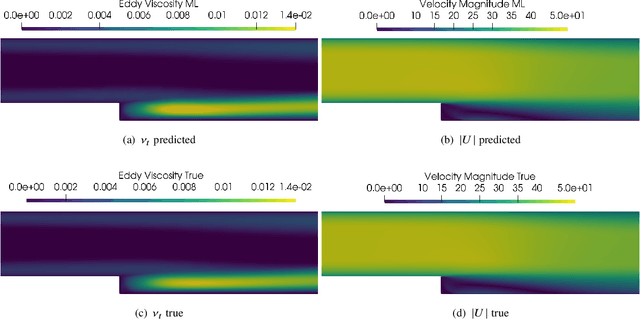
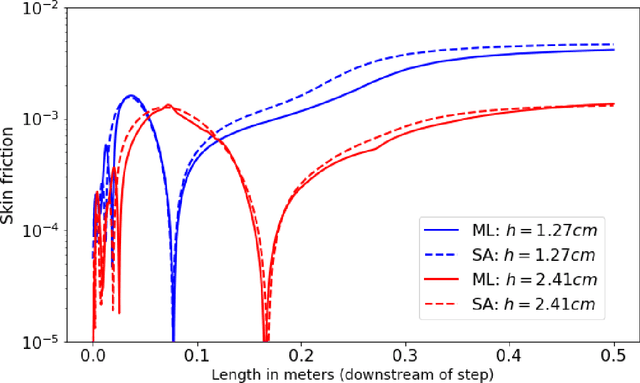
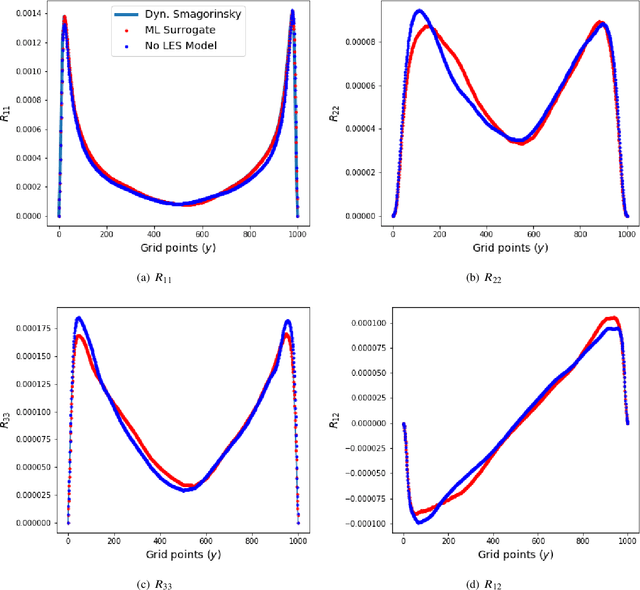
Abstract:We outline the development of a data science module within OpenFOAM which allows for the in-situ deployment of trained deep learning architectures for general-purpose predictive tasks. This module is constructed with the TensorFlow C API and is integrated into OpenFOAM as an application that may be linked at run time. Notably, our formulation precludes any restrictions related to the type of neural network architecture (i.e., convolutional, fully-connected, etc.). This allows for potential studies of complicated neural architectures for practical CFD problems. In addition, the proposed module outlines a path towards an open-source, unified and transparent framework for computational fluid dynamics and machine learning.
Bayesian Neural Networks at Scale: A Performance Analysis and Pruning Study
May 28, 2020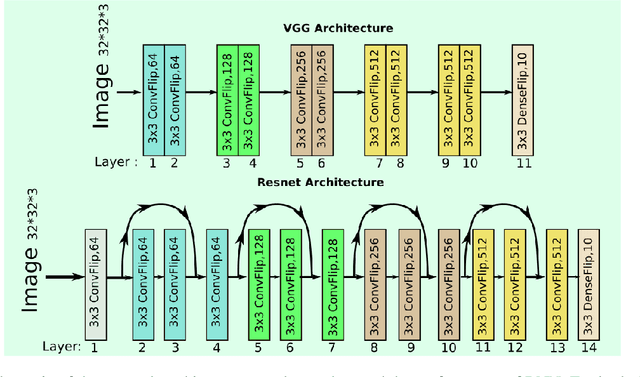
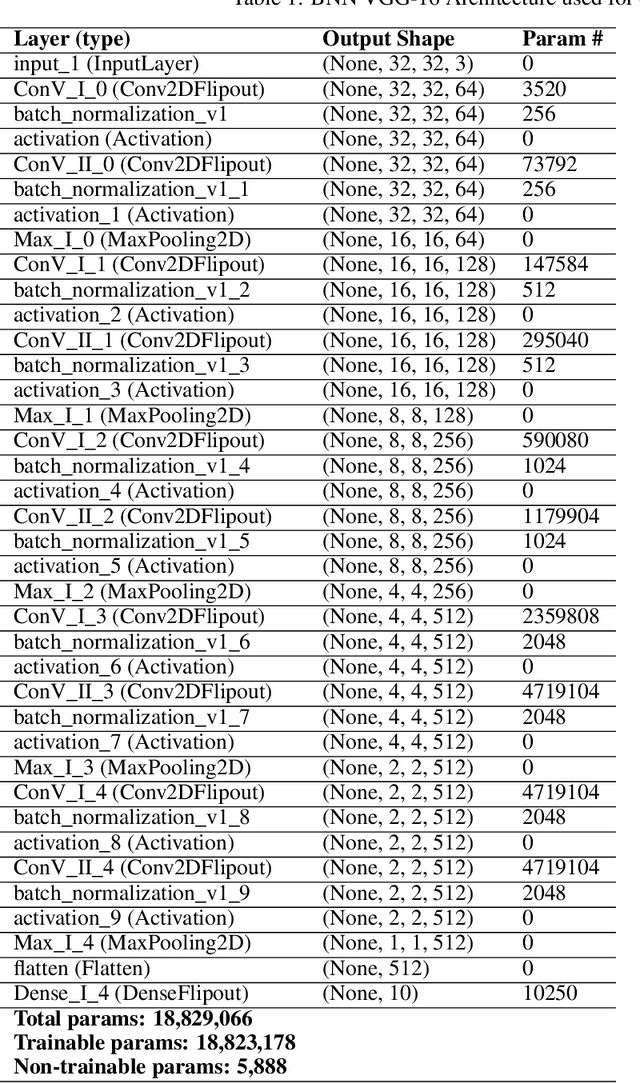
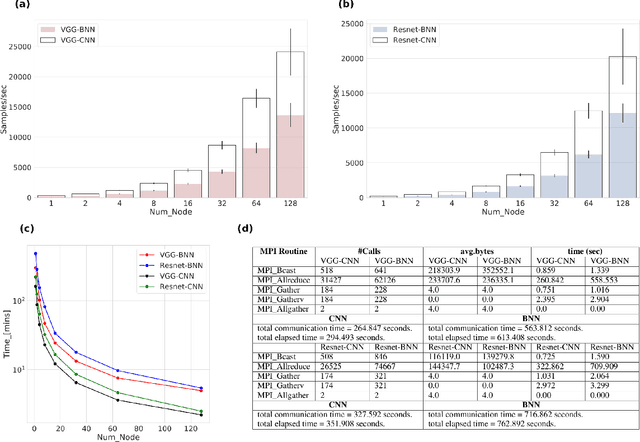
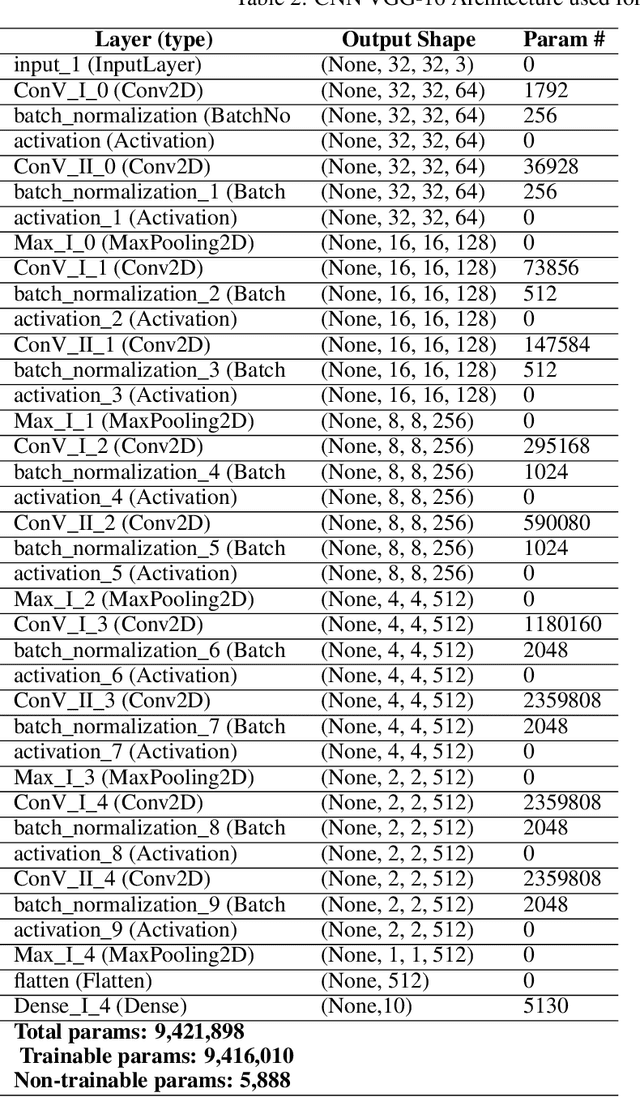
Abstract:Bayesian neural Networks (BNNs) are a promising method of obtaining statistical uncertainties for neural network predictions but with a higher computational overhead which can limit their practical usage. This work explores the use of high performance computing with distributed training to address the challenges of training BNNs at scale. We present a performance and scalability comparison of training the VGG-16 and Resnet-18 models on a Cray-XC40 cluster. We demonstrate that network pruning can speed up inference without accuracy loss and provide an open source software package, {\it{BPrune}} to automate this pruning. For certain models we find that pruning up to 80\% of the network results in only a 7.0\% loss in accuracy. With the development of new hardware accelerators for Deep Learning, BNNs are of considerable interest for benchmarking performance. This analysis of training a BNN at scale outlines the limitations and benefits compared to a conventional neural network.
Enabling real-time multi-messenger astrophysics discoveries with deep learning
Nov 26, 2019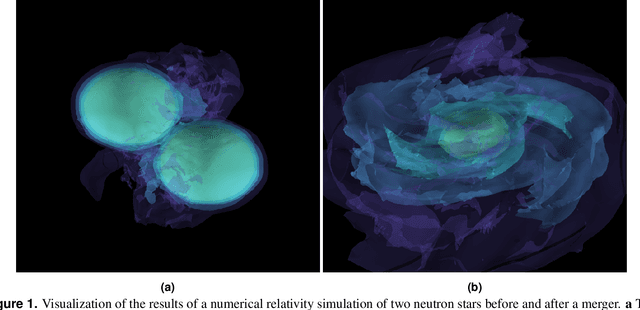
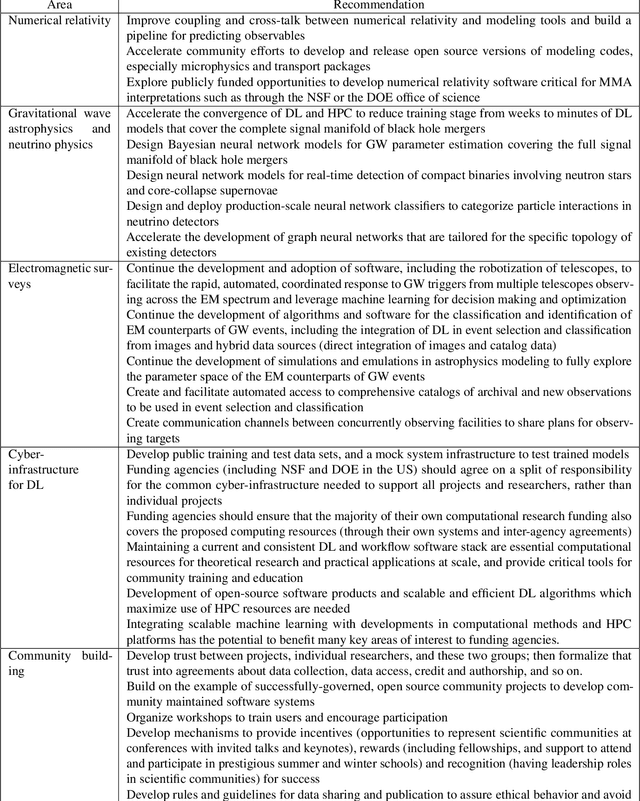
Abstract:Multi-messenger astrophysics is a fast-growing, interdisciplinary field that combines data, which vary in volume and speed of data processing, from many different instruments that probe the Universe using different cosmic messengers: electromagnetic waves, cosmic rays, gravitational waves and neutrinos. In this Expert Recommendation, we review the key challenges of real-time observations of gravitational wave sources and their electromagnetic and astroparticle counterparts, and make a number of recommendations to maximize their potential for scientific discovery. These recommendations refer to the design of scalable and computationally efficient machine learning algorithms; the cyber-infrastructure to numerically simulate astrophysical sources, and to process and interpret multi-messenger astrophysics data; the management of gravitational wave detections to trigger real-time alerts for electromagnetic and astroparticle follow-ups; a vision to harness future developments of machine learning and cyber-infrastructure resources to cope with the big-data requirements; and the need to build a community of experts to realize the goals of multi-messenger astrophysics.
* Invited Expert Recommendation for Nature Reviews Physics. The art work produced by E. A. Huerta and Shawn Rosofsky for this article was used by Carl Conway to design the cover of the October 2019 issue of Nature Reviews Physics
Deep Learning for Multi-Messenger Astrophysics: A Gateway for Discovery in the Big Data Era
Feb 01, 2019Abstract:This report provides an overview of recent work that harnesses the Big Data Revolution and Large Scale Computing to address grand computational challenges in Multi-Messenger Astrophysics, with a particular emphasis on real-time discovery campaigns. Acknowledging the transdisciplinary nature of Multi-Messenger Astrophysics, this document has been prepared by members of the physics, astronomy, computer science, data science, software and cyberinfrastructure communities who attended the NSF-, DOE- and NVIDIA-funded "Deep Learning for Multi-Messenger Astrophysics: Real-time Discovery at Scale" workshop, hosted at the National Center for Supercomputing Applications, October 17-19, 2018. Highlights of this report include unanimous agreement that it is critical to accelerate the development and deployment of novel, signal-processing algorithms that use the synergy between artificial intelligence (AI) and high performance computing to maximize the potential for scientific discovery with Multi-Messenger Astrophysics. We discuss key aspects to realize this endeavor, namely (i) the design and exploitation of scalable and computationally efficient AI algorithms for Multi-Messenger Astrophysics; (ii) cyberinfrastructure requirements to numerically simulate astrophysical sources, and to process and interpret Multi-Messenger Astrophysics data; (iii) management of gravitational wave detections and triggers to enable electromagnetic and astro-particle follow-ups; (iv) a vision to harness future developments of machine and deep learning and cyberinfrastructure resources to cope with the scale of discovery in the Big Data Era; (v) and the need to build a community that brings domain experts together with data scientists on equal footing to maximize and accelerate discovery in the nascent field of Multi-Messenger Astrophysics.
 Add to Chrome
Add to Chrome Add to Firefox
Add to Firefox Add to Edge
Add to Edge